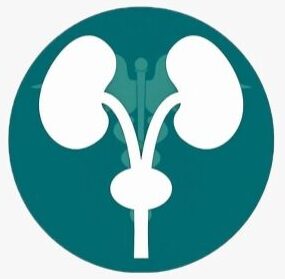Welcome to our comprehensive guide on the OIU (Optical Internal Urethrotomy) procedure in urology. This article aims to provide in-depth information on this minimally invasive endoscopic intervention for managing urological conditions. Whether you’re a patient seeking knowledge or a medical practitioner seeking to expand your understanding, this guide covers the essentials of the OIU procedure. Read on to discover its process, benefits, recovery, and more.
Understanding the OIU Procedure
The OIU (Optical Internal Urethrotomy) procedure is a minimally invasive endoscopic intervention performed in urology to treat urethral strictures. A urethral stricture is a narrowing or blockage of the urethra, the tube that carries urine from the bladder out of the body. The OIU procedures involves using a specialized endoscope to visualize the stricture and make precise incisions to widen the narrowed area, allowing for improved urine flow.
Indications for the OIU procedure
The OIU procedure is commonly recommended for patients with urethral strictures caused by various factors, including trauma, infections, inflammation, or previous surgeries. Symptoms of urethral strictures may include difficulty urinating, weak urine flow, frequent urination, or urinary retention. Your urologist will evaluate your condition and determine if the OIU procedures is appropriate for you.
How does the OIU procedure work?
During the OIU procedures, a small, flexible endoscope is inserted into the urethra, allowing the urologist to visualize the stricture. A specialized laser or a cold knife is then used to make precise incisions in the narrowed area, carefully cutting through the scar tissue or blockage. This helps to restore the normal diameter of the urethra and improve urine flow.
Benefits of the OIU procedure
The OIU procedures offers several benefits for patients with urethral strictures. It is a minimally invasive approach that avoids the need for open surgery, resulting in smaller incisions, reduced pain, and quicker recovery times. The procedure is typically performed on an outpatient basis, allowing patients to return home the same day. Additionally, the OIU procedure has shown good success rates in relieving symptoms and improving urine flow in many patients.
Preparation for the OIU Procedure
Initial consultation and medical evaluation
Before the OIU procedures, you will have an initial consultation with your urologist. They will review your medical history, perform a physical examination, and may order additional tests such as urethral imaging or uroflowmetry to assess the severity of the stricture. This evaluation helps determine if the OIU procedure is the most suitable treatment option for you.
Pre-procedure instructions
Your healthcare provider will provide specific instructions to prepare for the OIU’s procedure. These instructions may include guidelines on fasting prior to the procedure, temporarily stopping certain medications that could interfere with the procedure or recovery, and arranging for transportation to and from the hospital or clinic.
Medications and Anaesthesia
During the OIU’s procedure, you may be given local or general anaesthesia to ensure your comfort. The type of anaesthesia used will depend on various factors, such as the complexity of the stricture and your overall health. Your urologist will discuss the anaesthesia options with you and address any concerns or questions you may have.
Conclusion : OIU Procedure in Urology
In conclusion, the OIU’s procedure is a valuable tool in the field of urology, providing an effective treatment option for various urological conditions. Its minimally invasive nature, short recovery time, and potential for long-term relief make it a preferred choice for patients and practitioners. By understanding the process, benefits, and recovery associated with the OIU’s procedure, individuals can make informed decisions about their urological health and seek appropriate medical guidance when needed.
FAQs: OIU Procedure in Urology
Who is a suitable candidate for the OIU procedure?
Suitable candidates for the OIU’s procedure are individuals diagnosed with urethral strictures, experiencing symptoms such as difficulty urinating, weak urine flow, frequent urination, or urinary retention. However, each case is unique, and it’s essential to consult with a urologist who will evaluate your specific condition to determine if the OIU’s procedure is appropriate for you.
How long does the OIU procedure typically take?
The duration of the OIU’s procedure can vary depending on the complexity of the stricture and the individual patient. On average, the procedure itself usually takes around 20 to 30 minutes. However, you should expect to spend additional time for pre-operative preparation and post-procedure monitoring and recovery.
Is the OIU procedure painful?
The OIU’s procedure is typically well-tolerated and performed with anesthesia to ensure your comfort. Local or general anesthesia is administered to numb the area and minimize discomfort during the procedure. You may experience mild discomfort or soreness in the urethra or pelvic region after the procedure, but this can usually be managed with pain medication prescribed by your healthcare provider.
Are there any risks or complications associated with the OIU procedure?
Like any medical procedure, the OIU’s procedure carries some risks. Potential complications may include bleeding, infection, urethral injury, or recurrence of the stricture. However, these risks are relatively rare, and your urologist will take appropriate measures to minimize them. It is important to discuss potential risks and complications with your healthcare provider before undergoing the procedure.
How soon can I expect relief after undergoing the OIU procedure?
The OIU’s procedure aims to relieve symptoms associated with urethral strictures and improve urine flow. Many patients experience immediate relief after the procedure, while others may take some time to notice improvements. It is essential to follow your urologist’s post-procedure instructions and attend follow-up appointments to monitor your progress.
Will I need multiple OIU procedures?
In some cases, a single OIU procedure may be sufficient to alleviate the symptoms and improve urine flow. However, urethral strictures can sometimes recur over time. If the stricture returns or if additional strictures develop, your urologist may recommend further OIU procedures or alternative treatment options based on your specific condition.
Can the OIU procedure be performed under local anesthesia?
Yes, the OIU procedure can be performed under local anesthesia in certain cases. However, the choice of anesthesia depends on factors such as the complexity of the stricture, the patient’s comfort, and the urologist’s judgment. Your healthcare provider will discuss the anesthesia options with you and determine the most appropriate choice for your procedure.
Are there alternative treatments available for urological conditions?
Yes, there are alternative treatments available for urological conditions, including urethral strictures. Some alternatives to the OIU procedure may include dilation techniques, urethroplasty (surgical reconstruction of the urethra), or the use of stents or grafts. The choice of treatment depends on various factors such as the severity and location of the stricture, individual patient factors, and the urologist’s expertise. It is crucial to discuss all available options with your healthcare provider to determine the most suitable treatment plan for your condition.




